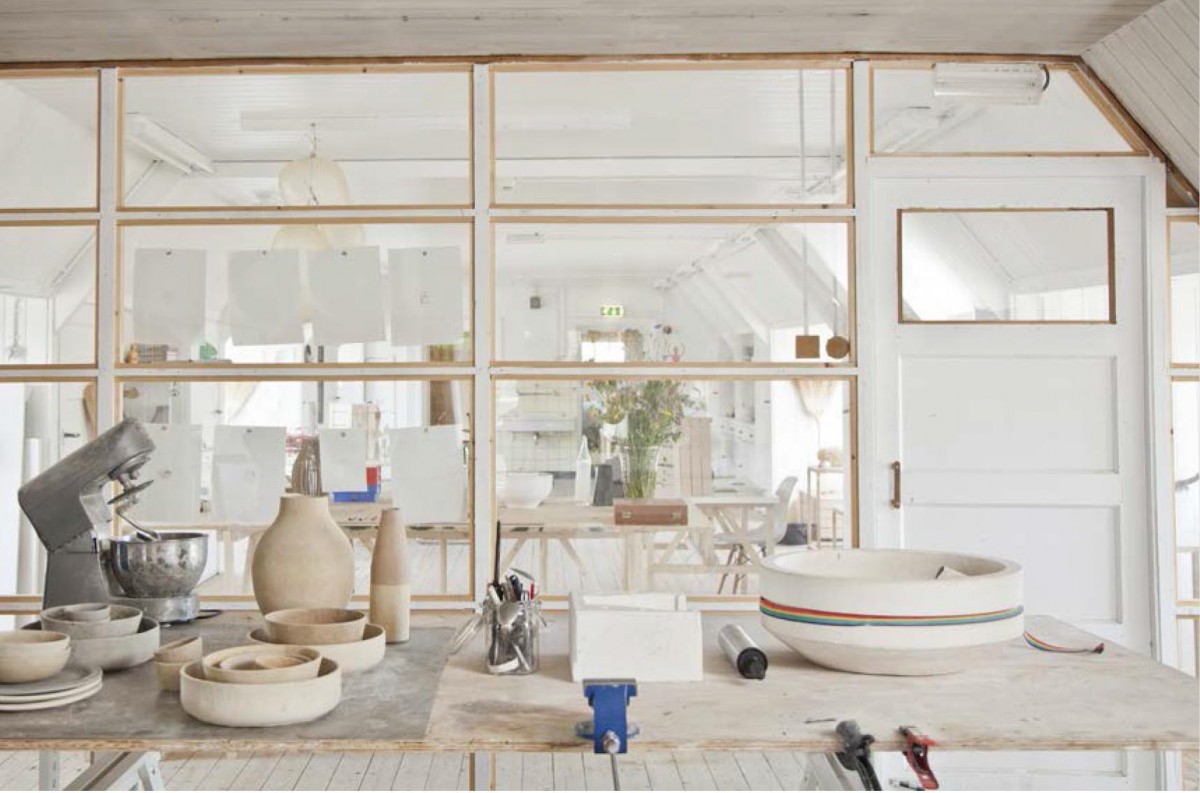


Forma Fantasma Studio, Amsterdam.
To: Nottingham Castle Museum and Art Gallery; The Stanley and Audrey Burton Gallery, University of Leeds; Mead Gallery, University of Warwick; Touchstones Rochdale; The McManus, Dundee Art Gallery & Museum
From: CAS Curatorial Team
This unusually long postcard wants to summarise the overloaded impressions of this year International Trip. It might function as an echo of the conversations we had while thinking of the possible CAS acquisitions for the Collections Fund. It is difficult to sum up our discussions but probably there was one topic that recurred with insistence during our trip: the pressing relationship between audiences and objects, artworks and displays, historical collections and contemporary works, the past asking for interpretation and the present pressing in.
The range of the institutions was varied: the historic collections of the Stedelijk and the Rijksmuseum in Amsterdam, the surrealist paintings of the Boijmans Van Beuningen in Rotterdam and the El-Lissitzky holdings of the Van Abbe Museum in Eindhoven provided the art historical context. The exhibition spaces were varied: an artist-run space, W139, Foam museum for photography, the upstairs/downstairs neighbouring exhibitions spaces Witte de With and Tent in Rotterdam. Amsterdam’s impressive Rijksakademie and its program of two-year residencies, where artists can access all kinds of workshops (metal, chemical, ceramics) whilst being able to focus on their research. The Akinci and Ron Mandos galleries have set up displays for us; we met with designers Forma Fantasma in Amsterdam and Raw Colours in Eindhoven.
On the first day Johann Arens at the Rijksakademie showed us his latest sculptures - empty plexiglass cases with an imprint of the hand - which reminded us of the objects usually displayed in cases and vitrines to which museum visitors never have access to; yet still addressing our overwhelming desire to touch them. Cvedet Erek's wall sound piece erases any tactile impulse; here it’s about hearing and experiencing, engaging with the immateriality of sound.
Rob Johannesma’s juxtaposition of images - paintings from the history of art - and contemporary imagery both found in newspapers created a visual dictionary of forms, linking forms and colours that are centuries apart; linking contemporaneity to history. Could this be a way to re-think a dialogue between scattered objects in the collection of a museum?
In Rotterdam, Tent’s exhibition The Museum of Unconditional Surrender wants to renegotiate the objects in exhibitions, challenging what can belong in a museum, an exhibition, an institution and the reasons behind it. Mandla Reuter’s palms of different dimensions made us immediately think of Marcel Broodthaers and his use of potted plants as sculptural material in Jardin d’Hiver (1974). A northern crab that spends time in the gallery had been filmed by Hannah James negotiating places of display.
The recent artworks of Melvin Moti engaged with the contradictions of museological display; we watched some his 35mm films whilst he recalled his invitation by the Stuttgart Museum to hang part of their 17th century paintings collection.
Probably it was Ahmet Ögüt’s Bakunin's Barricade (2015) at the Van Abbe Museum that summarised our concerns when working with a collection: paintings from Fernand Leger, El-Lisstisky, Francis Picabia, Max Ernst and Pablo Picasso stood (at first sight) precariously on the railings, street scarp and on a broken car. The work referred to Michal Bakunin’s proposal from 1848 to place artworks on the barricades to defend the country. Today, the installation stands as a metaphor to culture, the duties museums have in preserving and conserving artworks for future generations; but also how arts can be a powerful tool to fight with, placing the products of our history, time, culture on a barricade.
This might be a daring proposition but it made us aware of what can be done with collections, displays and history; how contemporary artists can engage with museums with their daring and audacious views.
Ilaria Puri Purini
Programmes Manager